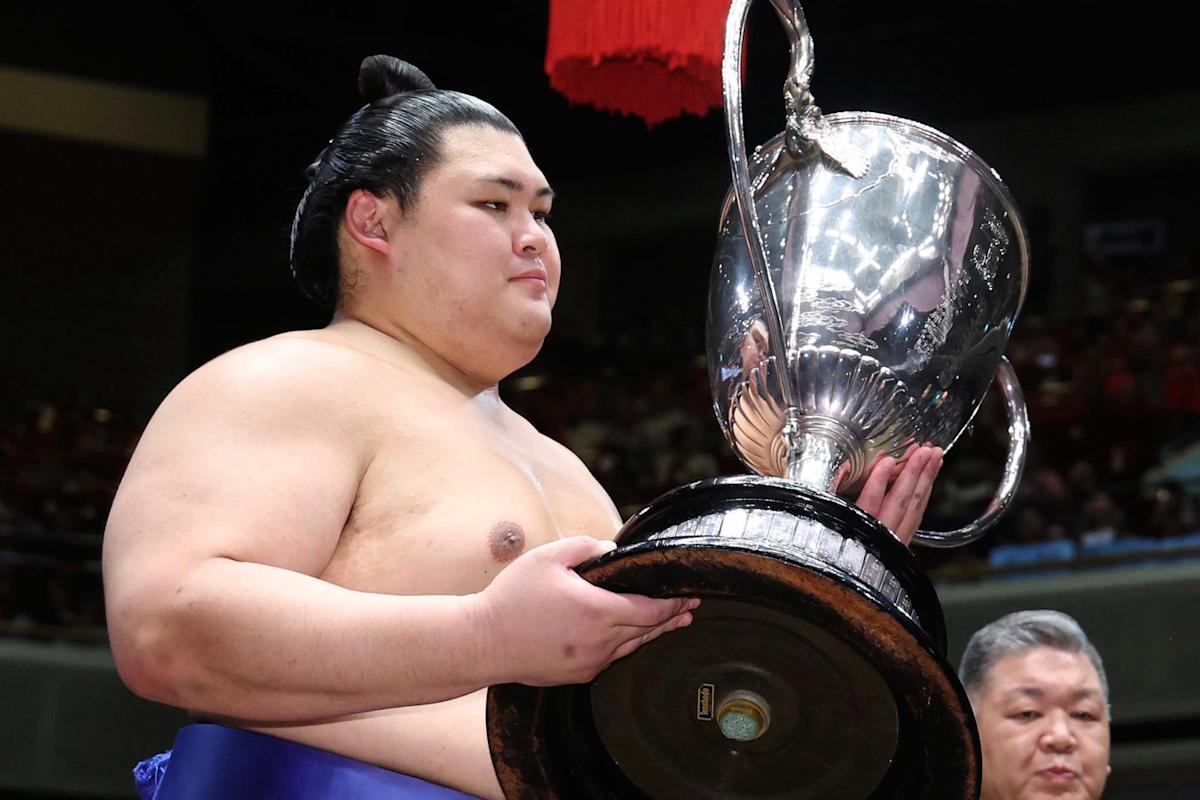
In a significant moment for the world of sumo wrestling, the sport has welcomed a new grand champion, or yokozuna, in a historic turn of events. Onosato, a heavyweight competitor from Japan, has claimed the title, marking a triumphant return of Japanese wrestlers to the pinnacle of this revered sport. This achievement holds considerable significance, especially since the sport has been predominantly ruled by Mongolian wrestlers over the past decade.
Onosato, whose real name is Daiki Nakamura, is not only notable for his size—tipping the scales at an impressive 191 kilograms (421 pounds)—but also for being the first Japanese to ascend to this esteemed rank since 2017. To put his size into perspective, the average weight of an NFL lineman is approximately 140 kilos, underscoring the sheer physicality involved in sumo wrestling.
The Japan Sumo Association celebrated Onosato’s promotion following his remarkable performance at the recent Summer Grand Sumo Tournament, an esteemed event in the sumo calendar. This victory was notably preceded by yet another triumph in a prestigious tournament held in March, hinting at his promising future in professional sumo wrestling.
Rooted deeply in Japanese culture, sumo is often referred to as Japan’s national sport, reflecting its sacred status. The sport’s rich traditions intertwine with Shinto, Japan’s indigenous religion, incorporating elaborate rituals and ancient customs that elevate each match to a spectacle woven from historical significance. Sumo’s origins date back over a millennium, placing it as a critical element of Japan’s cultural heritage.
The rigorous lifestyle of sumo wrestlers contributes to the sacred aura surrounding the sport. Many competitors reside in communal training facilities, where their diets and attire are dictated by time-honored traditions. This disciplined approach not only shapes their physical prowess but also fosters a sense of camaraderie and respect among wrestlers.
Onosato’s ascension to yokozuna sets the stage for an exciting rivalry with Hoshoryu, a fellow competitor of Mongolian descent. Both wrestlers are anticipated to face off in an upcoming tournament in July, held in the central city of Nagoya. This showdown promises to be a thrilling event for sumo aficionados, reigniting interest in the age-old sport.
The profound implications of Onosato’s victory extend beyond the wrestling ring. His success fuels a resurgence of pride within the Japanese sumo community, inspiring young wrestlers across the nation. Many see Onosato as a beacon of hope, an emblem of renewed competition and a reminder of Japan’s illustrious legacy in the sport.
The significance of Onosato’s rise can also be traced back to the competitive landscape of recent years. Six of the past seven yokozunas have been from Mongolia, leading to discussions about the state’s influence on sumo. This trend prompted concerns over the diminishing presence of homegrown talent. Onosato’s elevation not only breaks this foreign dominance but also reaffirms the sport’s deep-rooted connection to Japanese culture and identity.
As sumo continues to evolve in a modern context, maintaining respect for its traditions remains paramount. Onosato’s promotion highlights the balance between honoring the past and embracing future possibilities. His journey underscores the harsh realities of life as a sumo wrestler, where elite status requires not just physical gifting and strategy but a profound commitment to rigorous training and discipline.
Looking ahead, the expectations for Onosato are monumental. With his youth—just 24 years old—there is plenty of time for him to cement his legacy as one of the greats in sumo. His ability to sustain this high level of performance will be crucial as he navigates both the physical and emotional challenges of being a yokozuna.
As sumo wrestling fans eagerly await his future matches, Onosato’s ascent serves to rejuvenate interest in a sport that embodies both spiritual and physical aspects of Japanese culture. The anticipation around his upcoming bouts—especially the notable match against Hoshoryu—adds a layer of excitement and drama consistent with sporting rivalries that transcend mere competition.
In a world that often shifts towards globalism, Onosato’s victory is a heartening reminder of the importance of local identity and tradition. His success reaffirms the message that sumo wrestling, as Japan’s cherished national sport, remains an integral part of Japan’s cultural fabric.
As the sumo community rallies around their new champion, fans are reminded that triumphs such as these signify more than just victories on the mat; they represent the resilience of culture, tradition, and national pride. The stage is set, and the wrestling world will be watching closely as Onosato endeavors to carve out his legacy in the annals of sumo history.
In summary, Onosato’s promotion to yokozuna ignites hope and excitement for the future of sumo wrestling in Japan. His journey from aspiring wrestler to grand champion embodies the spirit of dedication, discipline, and cultural pride that is synonymous with this storied sport. As fans prepare for the upcoming tournaments, the narrative will unfold in ways that resonate beyond the ring, evoking a passion for a sport that has stood the test of time.
Source link








